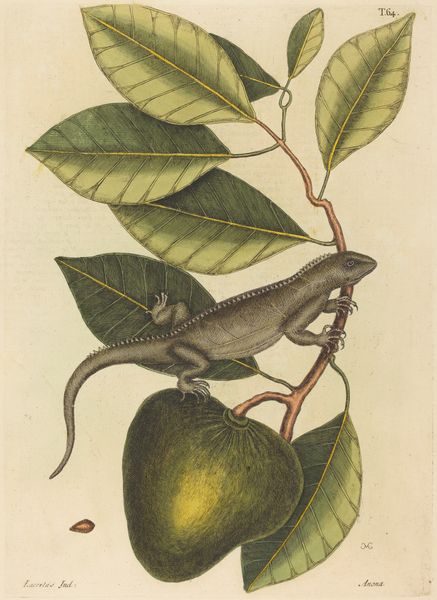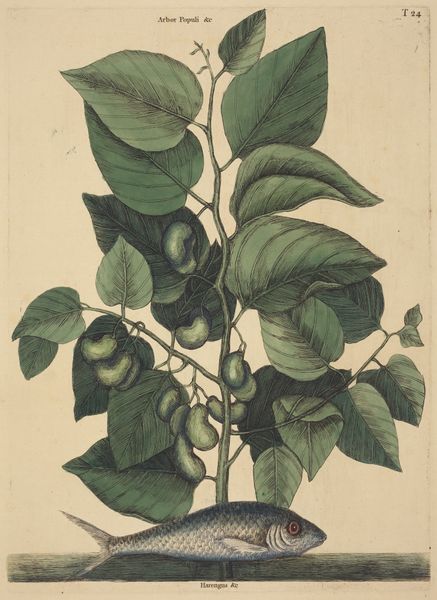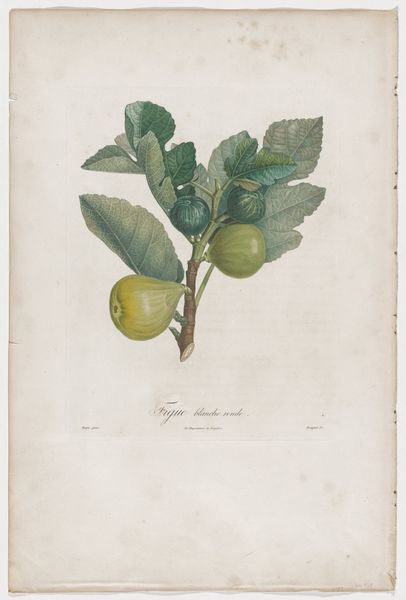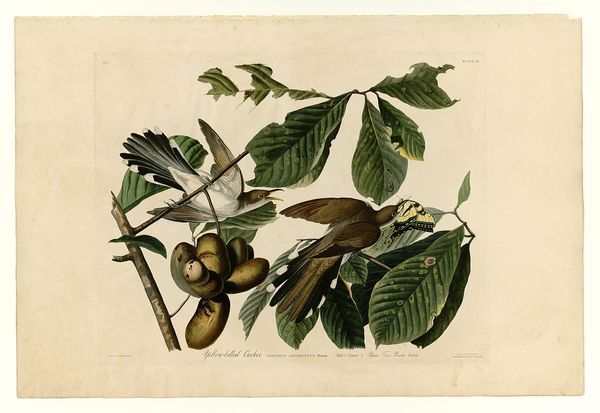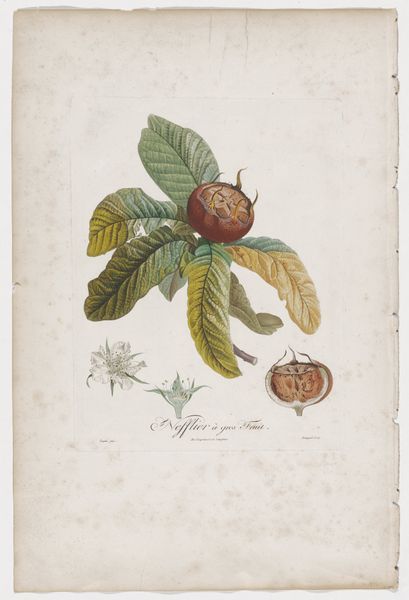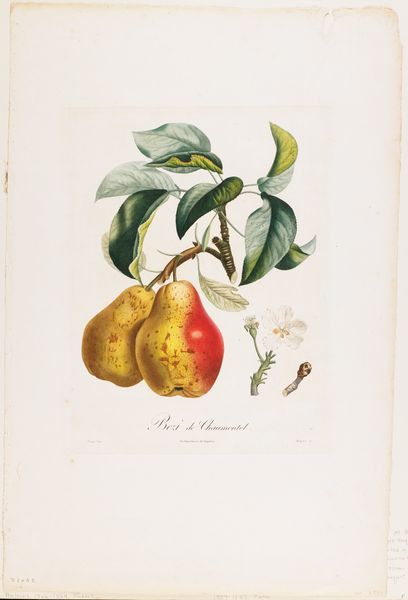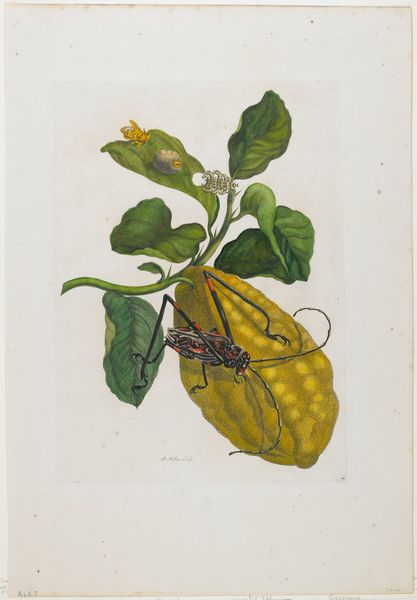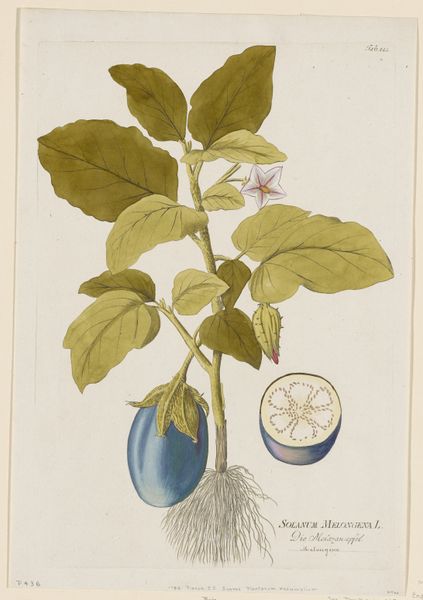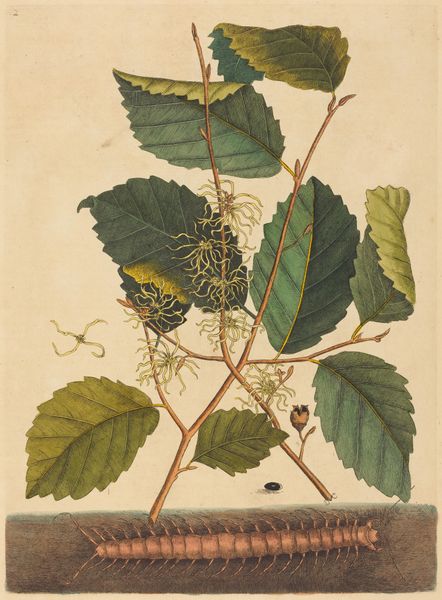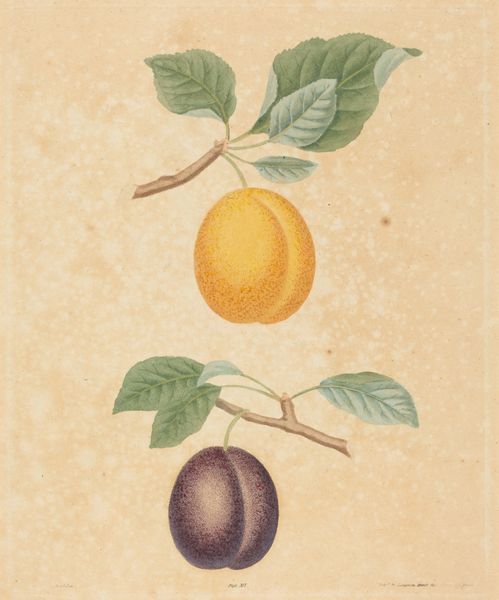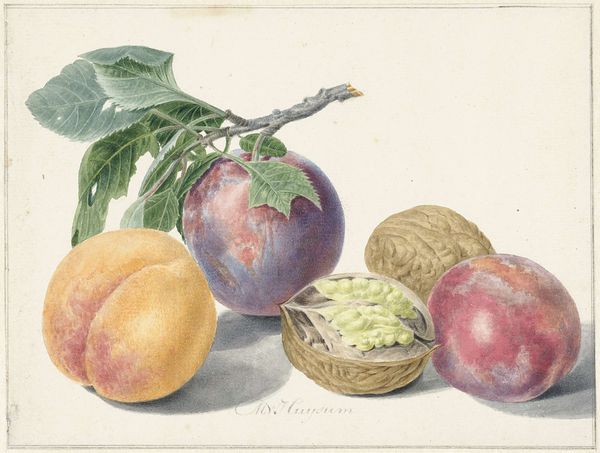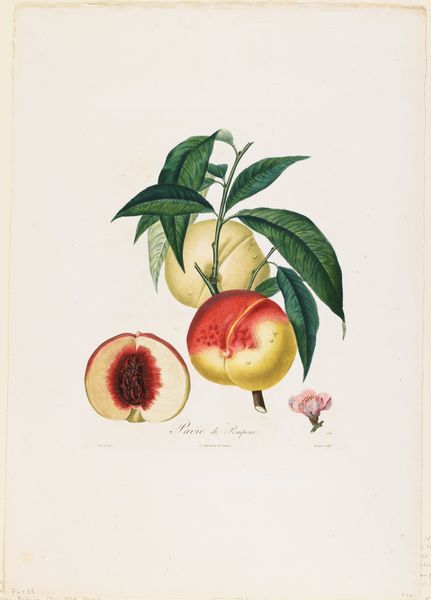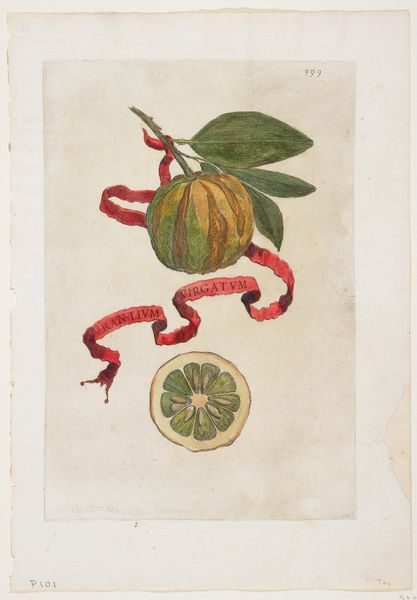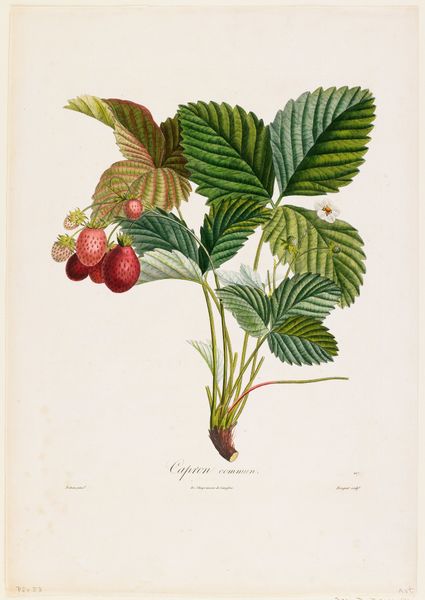
Artocarpus Incisa (The True Bread-fruit- of the Phillipines) 1866
0:00
0:00
drawing, watercolor
#
drawing
#
watercolor
#
watercolour illustration
#
watercolor
Dimensions: 21 1/4 x 17 1/2 in. (53.98 x 44.45 cm) (image)23 5/16 x 18 3/4 in. (59.21 x 47.63 cm) (sheet)
Copyright: Public Domain
Curator: Priscilla Susan Bury's "Artocarpus Incisa (The True Bread-fruit- of the Phillipines)", dating from 1866, offers a meticulous watercolor rendering of this fruit. The work is currently held at the Minneapolis Institute of Art. Editor: My first impression is of precision and abundance; the detail is astounding. The colors, predominantly greens and browns, feel very grounded and earthy. Curator: Absolutely. It’s a superb example of botanical illustration, intended to convey accurate visual information about a specimen. But also, the artwork becomes important when we consider its role in documenting a colonial encounter. This work reflects European efforts to catalog and control nature in distant lands like the Philippines, often eliding indigenous knowledge of this very same breadfruit. Editor: That's a key point. We see the hand of the artist shaping and categorizing, in service of imperial understanding. Look at the materiality; watercolours allowing for translucent layers building to substantial form. Consider also, the social context for the image; what knowledge economy was Bury participating in through the image? The slice revealing the fruit’s inner texture adds another layer – we gain both an external and internal view, offering an almost scientific approach to the subject. Curator: Yes, the depiction of a halved breadfruit offers an almost clinical level of detail that speaks volumes. We can also ask who the audience was. Given the scientific, meticulous quality and the economic background behind expeditions cataloging resources, who exactly was the targeted consumer for such works? The piece implicitly reflects prevailing European views of race, power, and the subjugation of foreign cultures in that historical moment. Editor: I'd argue, additionally, the choices related to craft making play a critical role here. How many watercolor illustrations of plants have attempted to convey accurate botanical realities about the places of global agriculture during colonization? The labor, technique and production of the visual material helps give shape to western views of the era. Curator: Indeed, this illuminates the complex intersection of artistic technique, scientific endeavor, and colonial enterprise in the 19th century. It's an apparently simple piece that unveils profound sociopolitical realities. Editor: It reveals how artistic materials can be deployed within structures of power and commerce during a time of global upheaval and the shaping of modern production.
Comments
No comments
Be the first to comment and join the conversation on the ultimate creative platform.
